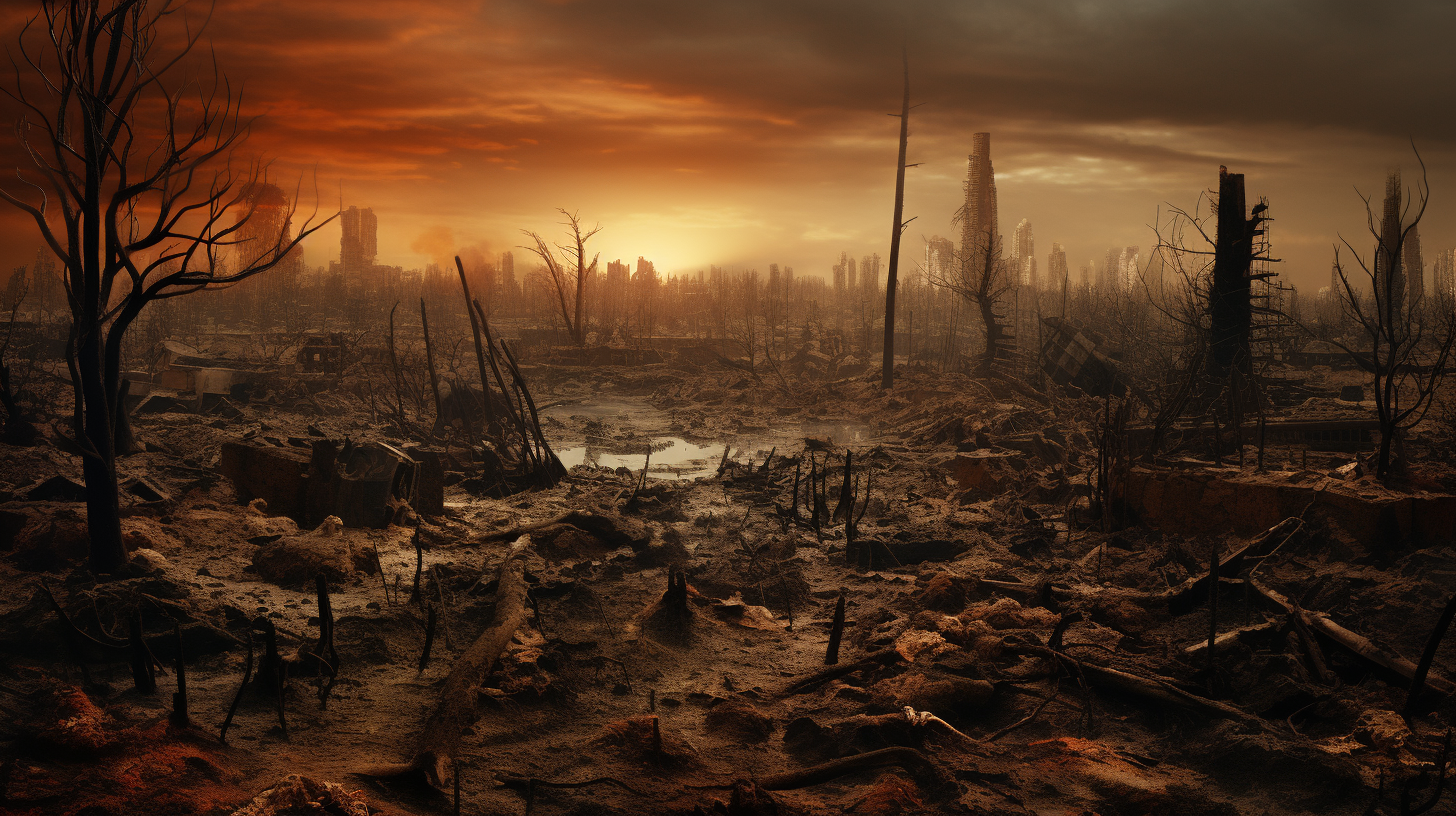In the aftermath of blazes that rival Dante’s infernal visions, we stand amidst what were once bastions of verdant life, now reduced to charcoal and ash. ‘After the Inferno – Scorched Earth and the Promise of Regrowth’ delves into the paradox of destruction and rebirth that follows our planet’s devastating wildfires. As we traverse the skeletal remnants of what were formerly lush landscapes, a question whispers with the subtlety of sprouting seeds: can regrowth prevail from the scorched earth left in the wake of such relentless infernos?
The landscape before us is staggering in its desolation — a monochrome world where fire has consumed all chromatic vitality. Trees stand as charred sentinels in a graveyard of biodiversity. The air, once teeming with the chorus of wildlife, is eerily silent, save for the somber crackling of smoldering remains. This is the new legacy of nature’s fury, one not of life, but of its temporary cessation.
Yet, beneath the blackened surface, an epic drama of ecological resilience unfolds. Some species of trees, equipped with serotinous cones or thick bark, rely on fire’s caress for reproduction, their seeds springing to life only when heated. Fire-followers, a group of plants that germinate post-inferno, leap at the chance to colonize land, basking in the nutrient-rich soil and open sunlight where their competitors once stood. In these darkened wilds, the promise of life is ready to claim its place with a vigor that defies the destruction above.
Fungi, those spore-bearing marvels, emerge as unsung heroes in the narrative of renewal. Mycorrhizal networks buried beneath the pyre begin their work of healing, offering symbiotic relationships to nascent plants and trees, aiding in water and nutrient absorption — a crucial service in a nascent world striving to green once more.
Yet, this regrowth is not guaranteed. The alterations wrought by climate change introduce a level of unpredictability to these ancient cycles. More frequent and ferocious fires leave less time for recovery, threatening the very fabric of these ecosystems. Specialists speculate on ‘too much, too fast’, a concept that ecosystems, much like societies, can only absorb so much distress before the promise of renewal fades into permanence of loss.
Human intervention seeks to break this vicious cycle, attempting to restore what has been lost. Reforestation projects, driven by a blend of desperation and determination, dot these tormented landscapes. Engineers labor to devise slash-and-char agriculture, mimicking the natural cleansing of wildfires, creating a sanctuary for regrowth within controlled parameters. It is a dance with fire, choreographed with the hope of sustaining the music of life amid flames.
Tragic as it may seem, this is not a script for science fiction but a tableau all too real— the stage upon which the next act of our planet’s story will unfold. The charred drama of earth post-inferno does not conclude with ashes but begins anew with the sprouts of regrowth. Whether these shoots will mature into the forests of tomorrow or wither in the face of repeated burns is a narrative yet to be determined.
In closing the somber chapter of burnt canopies, we stand at the precipice of decision and action. ‘After the Inferno’ is a story of contrast — of loss and potential, despair and hope, ending and beginning. With the turning of the final page, the reader is left to ponder the role of protagonist they wish to play in the sequel written with the ink of reality.
